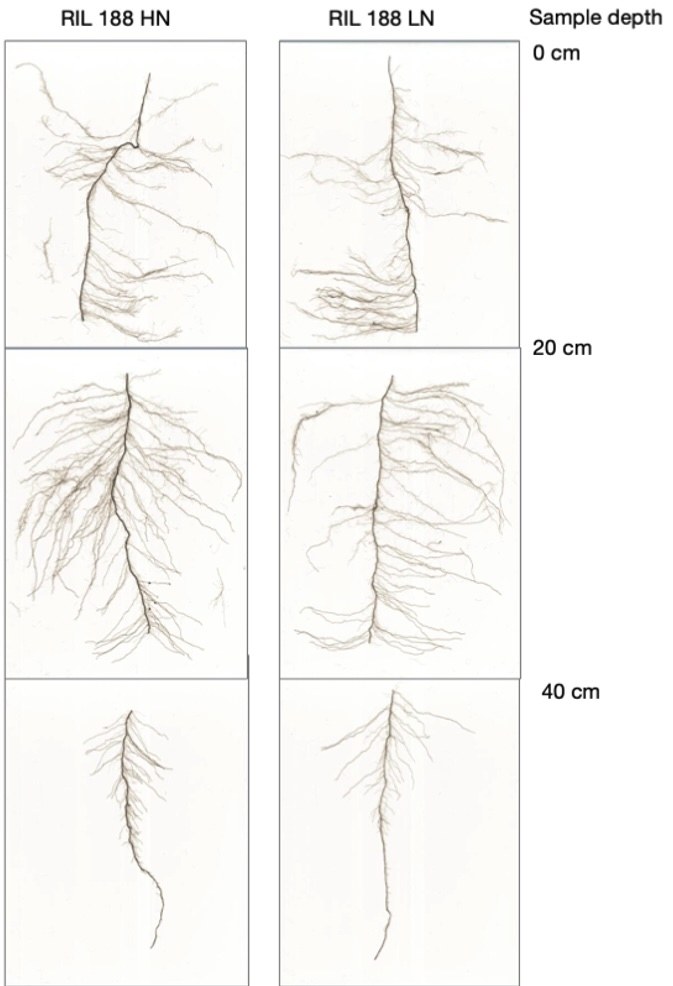
Root morphological research results
Authors
Tian Tian, Jonathan P. Lynch, Kathleen M. Brown
Source
Download Options
https://doi.org/10.1101/2024.08.28.610142
Abstract
Improving nitrogen use efficiency in rice would provide economic and environmental benefits, but little is known about root morphological and anatomical responses to low nitrogen. In this study, two sets of rice genotypes, one set from the RDP1 panel, and one set of recombinant inbred lines, were used to characterize responses to gradual nitrogen depletion by plant uptake and movement of nitrogen to deeper soil strata as a result of leaching, so that more nitrogen was available at depth in aerobic soil mesocosms in a greenhouse. There was significant genetic variation in shoot biomass reductions in response to low nitrogen. The root to shoot biomass ratio was increased by low nitrogen in both sets of genotypes. Relative investment in nodal root number was accentuated with low nitrogen, and shoot biomass was correlated with numbers and lengths of nodal and large lateral roots. There was genetic variation for nodal root number and length in both sets of genotypes. Anatomical responses to low nitrogen were assessed in nodal roots of the RILs, where root cross-sectional area, stele area, and metaxylem vessel number were reduced by low nitrogen, and root diameter was reduced in the RDP1 genotypes. There were significant interactions of nitrogen with genotype for stele area and percent aerenchyma in the RILs. Genetic variation for low nitrogen responses may be useful for selection of rice lines with greater nitrogen acquisition under nitrogen-leaching conditions.

